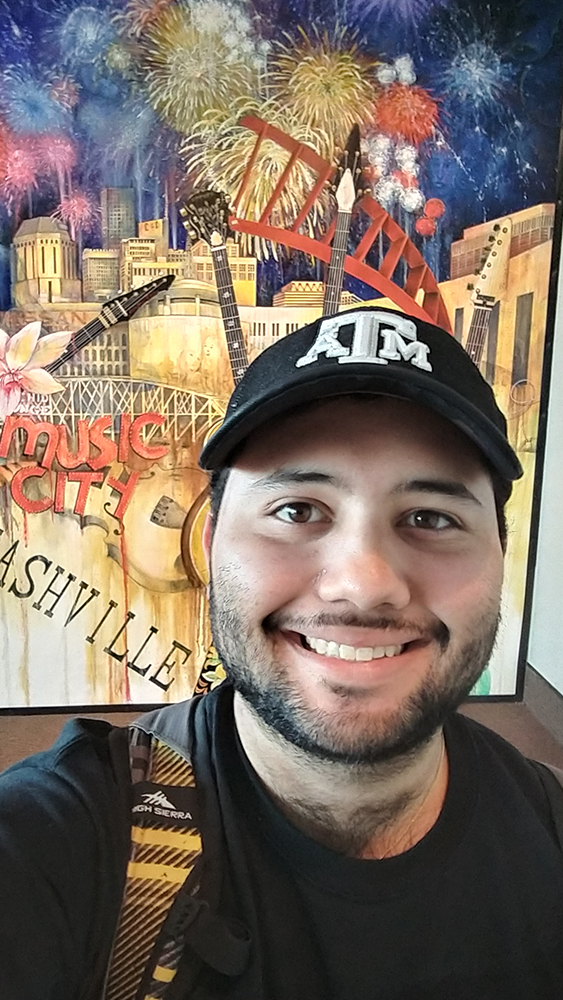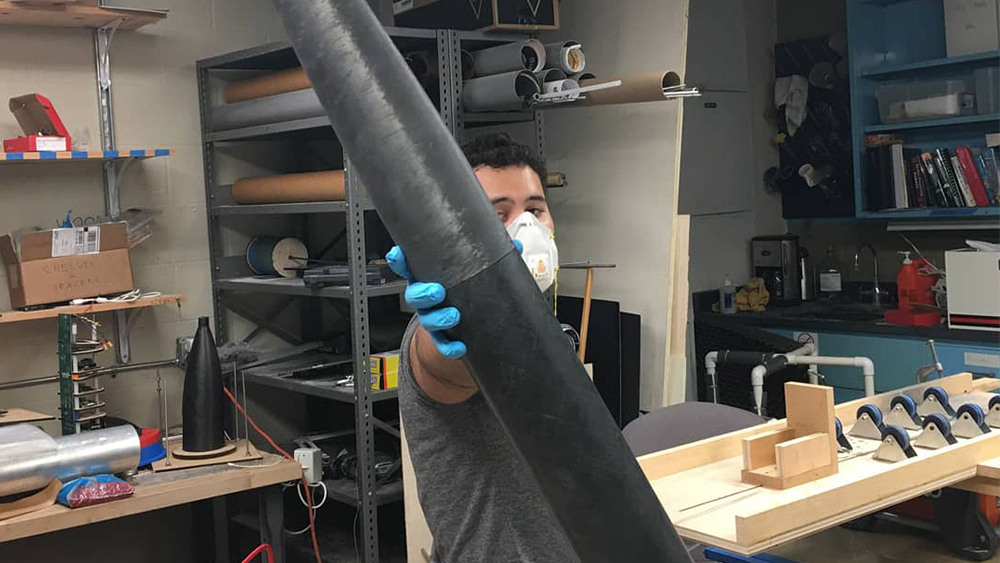
During a boring summer vacation last year, Duke University undergraduate student Joshua Farahzad came up with the idea to build an unmanned rocket and send it into outer space. Knowing he couldn’t do it alone, he sent out an email to various collegiate rocketry teams across the country. Gerardo Barillas, an undergraduate student in the Department of Aerospace Engineering at Texas A&M University, answered the call and joined Operation Space.
Operation Space is made up of about 50 talented students from more than 25 universities across the United States and Canada. Their goal was to successfully launch a rocket built and designed remotely by college students across the country. After completion, Operation Space took their final project to the federally licensed, 18,000 acre-launch complex next to the U.S. Army’s White Sands Missile Range in New Mexico in May.
Q&A
Q: What made you want to get involved in Operation Space?

A: I got involved because I wanted to learn more about rockets in general. I knew I was going to take the senior capstone design rocket class the upcoming school year so I thought this would be beneficial. I thought this goal was achievable because I had seen what the Texas A&M Sounding Rocketry team could do as well as other college teams across the U.S.
Q: What part did you play on the team?
A: I was part of the structures sub team and was in charge of the vast majority of computer-aided design (CAD) work done for the rocket, as well as the lead for the nose cone design and shape. I was also one of the nine team members that met up for build week at Nashville, Tennessee, in August of 2018.
Q: How did the team, spread across the country, manage to come together to build a rocket?
A: In order for the team to get together for a build period we had at least two, if not more, meetings per week, including weekends, since we were all mostly in different time zones and doing different things during the summer. We used the app Slack to communicate with our respective sub teams and the rest of the team, Google hangouts as our video chat, email and phone calls whenever things were urgent. For the build week we decided to only have the necessary people attend since space would be limited and we did not want teammates to have nothing to do while others worked.
Q: How did the launch go?
A: We had two launches because we had two identical rockets, one launched on May 31 and the other on June 1. The first rocket cleared the tower, ignited its second stage, but came apart at around 100,000 ft. because we lost a fin. For the second launch we also cleared the tower and ignited the second stage, but this time we kept going up straight as an arrow. From watching the livestream, I heard we had reached at least an 85 km altitude, or 85% of the way to space, but the official numbers have not been disclosed yet.
Q: What was the big picture goal for Operation Space?

A: The big picture goal was to show everyone around the world that such a technically challenging project can be successful if determined individuals come together and work hard. We also wanted to prove that working remotely and through the internet is a viable way to come together and build something complex.
Q: What’s your biggest takeaway from being on this team?
A: My biggest takeaway from being on this team is that you don’t have to be working in industry or have a lot of money in order to take on daunting engineering challenges. All it takes is a group of people to really dive into/commit to the project.
Q: Having just graduated from Texas A&M, what’s up next for you?
A: As of right now I am working for NASA at the Johnson Space Center in Houston as a payload systems engineer intern. I am hoping at the end of the internship I will be offered a full-time position. I also recently received notice that I have been admitted to Texas A&M’s aerospace master’s program. I would really love to stay here and learn but I also want a master’s degree, so I’m still in the process of deciding what my next step will be.